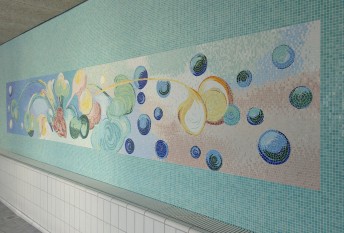Percent-for-art principle in Oulu
The percent-for-art principle was adopted in Oulu in the year 1964. At that time, the Finnish People’s Democratic League group on the council proposed at a meeting of the visual arts committee that 1.5 percent of the estimated cost of public buildings be used for sculptures, murals or other art acquisitions. A month later, a maximum recommendation of two percent was recorded in the minutes of the City Council.
The goal of the City of Oulu’s architecture-policy programme is to build an urban environment that is balanced in its content and unique to its region. As the builder and maintainer of service facilities, in 2001-2007, the facility services have been responsible for working in close cooperation with the art museum on the acquisition of visual art as laid down in the new percent-for-art rule. A primary role in the practical implementation and development of this approach has been played by the creation of functional starting points for the initiation of a dialogue between high-quality, user-oriented architecture and visual art. During this period, a considerable number of percent-for-art artworks have been acquired for schools, day-care and health-care centres, and the city’s other service facilities, as measured both in terms of the number of works and the cost of their acquisition.
With the City of Oulu’s new business unit, the Facility Center, having begun operations at the beginning of 2008, the funds for the acquisition of visual art allocated for investments in buildings, and thus also the job of commissioning acquisitions, the agreements and the responsibility for ensuring that funds are sufficient are being transferred from the facility services to Oulu City Art Museum. The planning and contracting work related to the building development remain with the Facility business unit. The Facility Centre will thus do the work of adapting the technical interfaces for percent-for-art artwork acquisitions to the built object, and of coordinating the realisation of the works, along with the acquisition schedules and overall costs.
The City’s acquisition procedure stipulates that the final resolution of a visual-art acquisition and its scale is to be made by the City Council when it decides on building investments in line with its acquisition plan.

